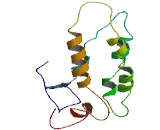Unusual 5'-regulatory structure and regulation of the murine Mlc1 gene: Lack of promoter-specific functional elements

Accepted: 22 July 2011
All claims expressed in this article are solely those of the authors and do not necessarily represent those of their affiliated organizations, or those of the publisher, the editors and the reviewers. Any product that may be evaluated in this article or claim that may be made by its manufacturer is not guaranteed or endorsed by the publisher.
The MLC1 gene is involved in an autosomal recessive neurological disorder, megalencephalic leucoencephalopathy with subcortical cysts (MLC), which is characterized by macrocephaly during the first year of life and swollen white matter (leucoencephaly). Variants of MLC1 have also been associated with psychiatric disorders such as schizophrenia, major depression and bipolar disorder. Currently, little is known about the encoded protein (MLC1). Judging from its similarity to other known proteins, it may serve as a trans-membrane transporter. However, the function of the encoded protein and its gene regulation has not been investigated successfully so far. We investigated the 5’ region of the murine Mlc1 with respect to regulatory elements for gene expression. A promoter search and an in silico analysis were conducted. Luciferase reporter gene constructs with potential promoter regions were created to study promoter activity in vitro. We found two alternative first exons for the murine Mlc1 but were not able to detect any promoter activity for the investigated reporter gene constructs in different cell lines, thus pointing to the presence of essential cis-acting elements far outside of the region. In silico analysis indicated an uncommon promoter structure for Mlc1, with CCAAT-boxes representing the only noticeable elements.
Supporting Agencies
Deutsche ForschungsgemeinschaftPAGEPress has chosen to apply the Creative Commons Attribution NonCommercial 4.0 International License (CC BY-NC 4.0) to all manuscripts to be published.


 https://doi.org/10.4081/jnai.2011.2314
https://doi.org/10.4081/jnai.2011.2314



